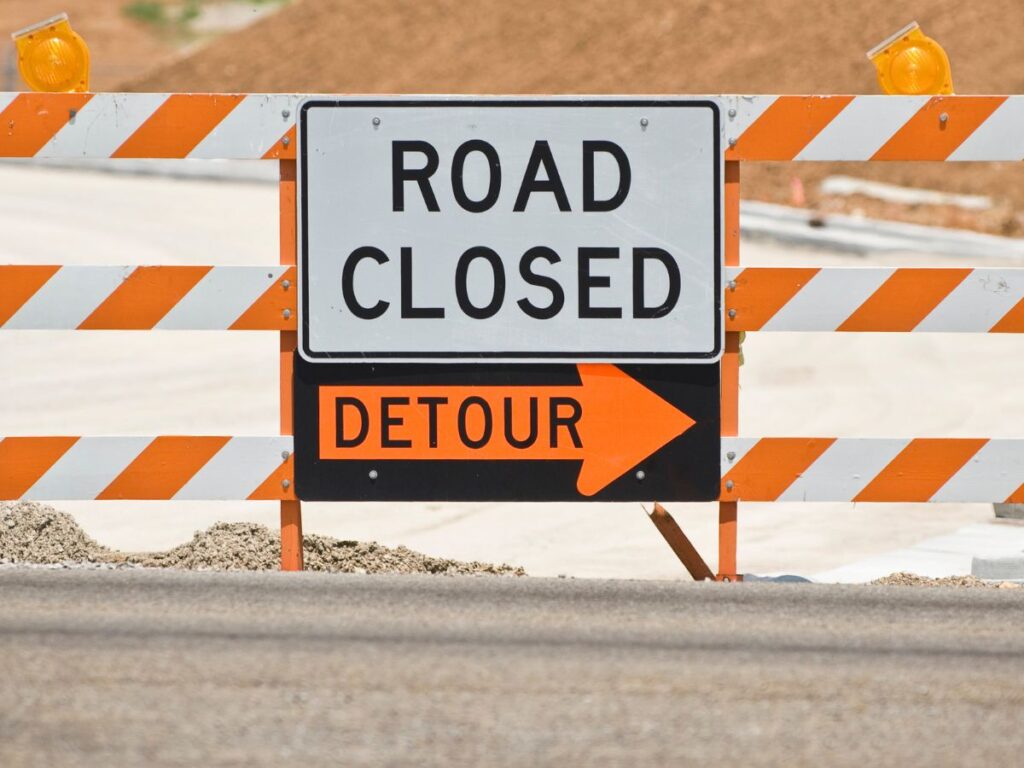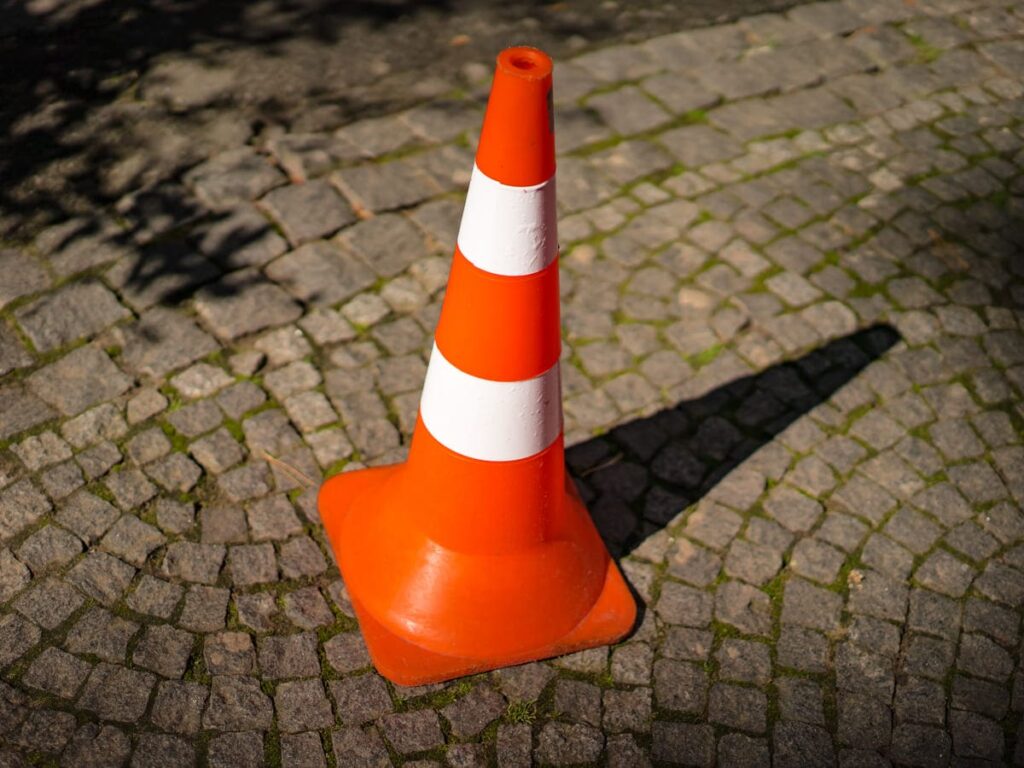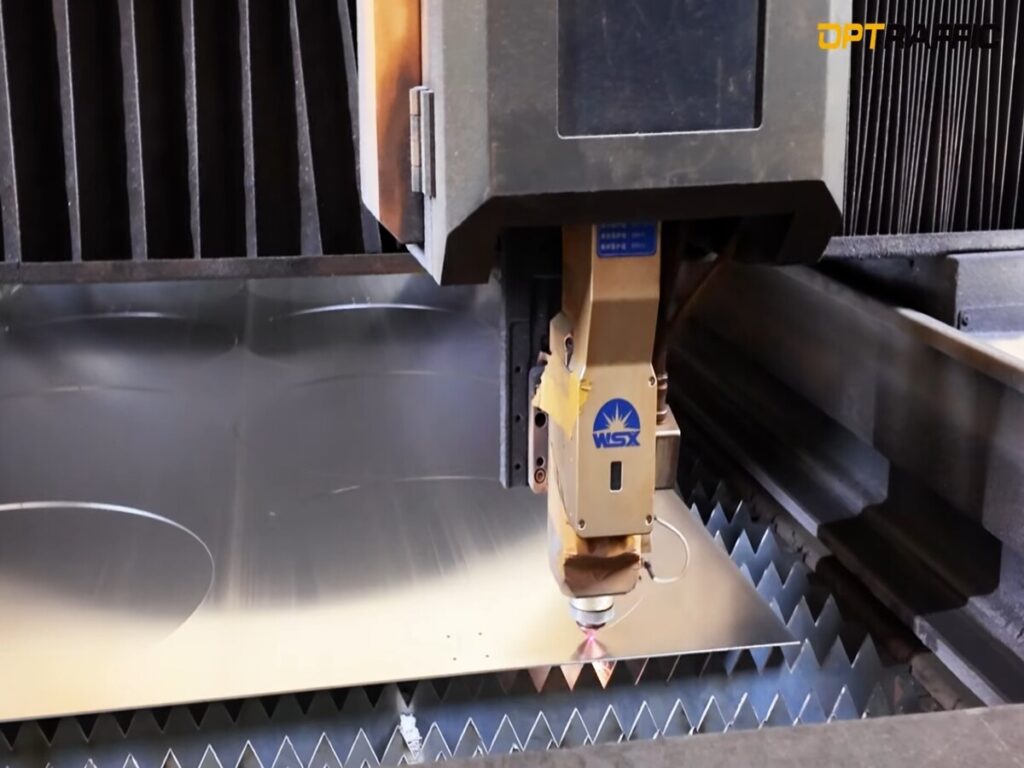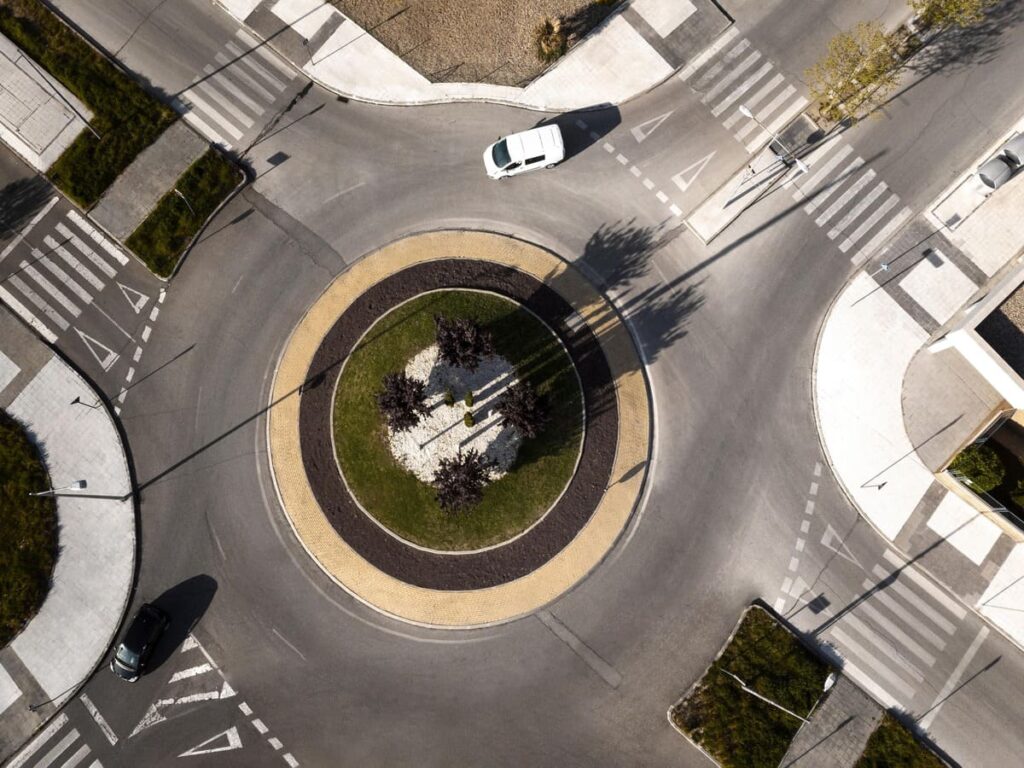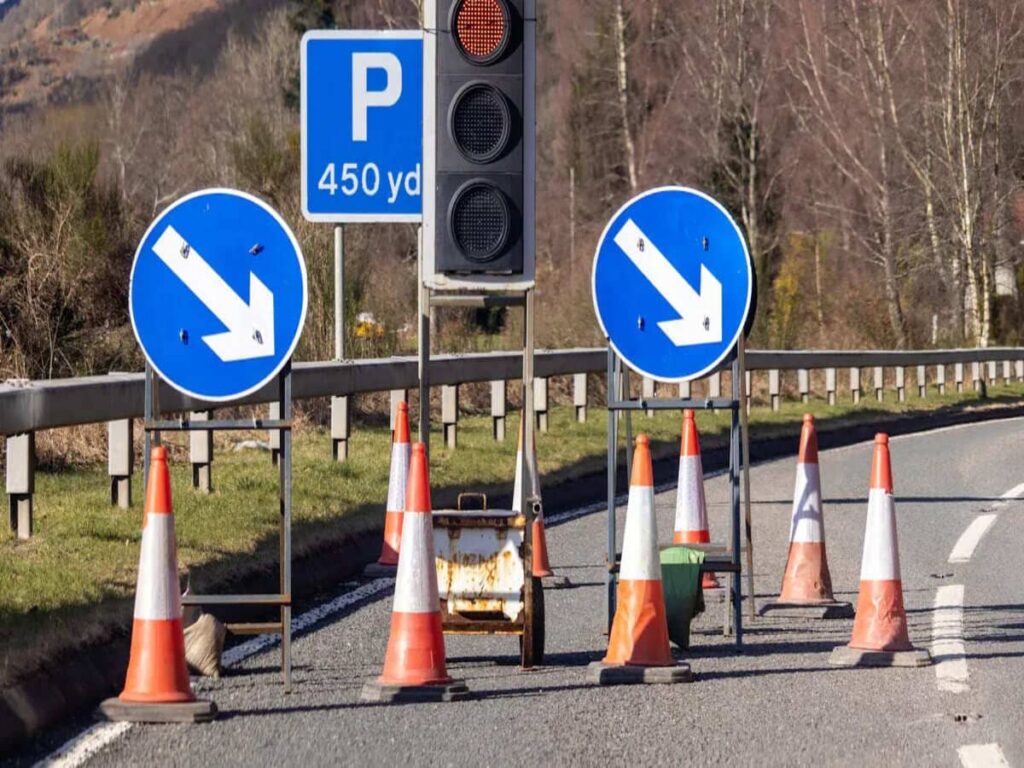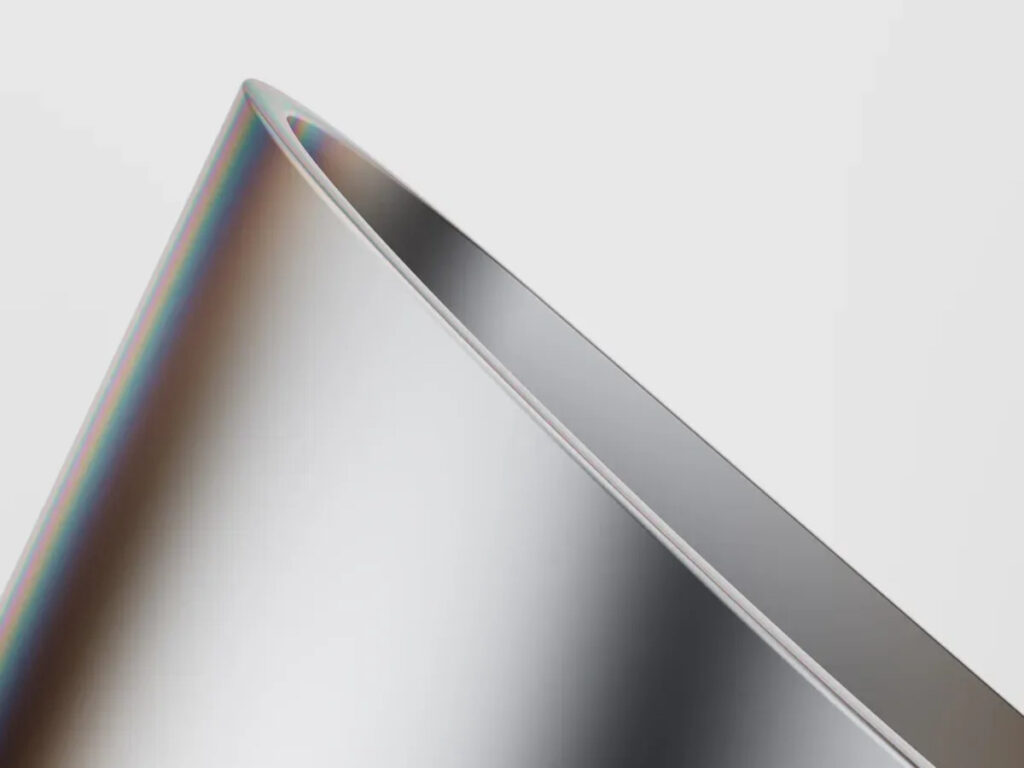
Have you ever wondered why some aluminum road signs last longer than others? The answer often comes down to thickness. If you want your signs to stand up to harsh weather or heavy traffic, you need to think about how thick they are. Choosing the right thickness can help you save money and keep your signs looking new for years.
Chez OPTRAFFIC, we offer a range of aluminum sheets for sale in various thicknesses to suit your panneau de signalisation besoins. Our products are designed for durability, ensuring your signs stay strong and visible, Même dans des environnements difficiles. Let us help you choose the perfect materials for your project.
Principaux à retenir
- Thicker aluminum signs stay strong for a long time. They do not bend easily. They can handle bad weather and hits better than thin signs.
- You should pick the right thickness for your sign. Pensez à où vous allez mettre le signe. Think about the weather there. Think about how many cars or people pass by.
- Thicker signs cost more at first. But they save money later. They do not need as many repairs or replacements.
- Thinner signs are lighter. They are easier to put up. They work best in quiet places with little traffic. Ils sont bons pour une utilisation à court terme.
- Aluminum is the best choice for road signs. It is strong and does not rust. It is light and good for the environment.
Pourquoi l'épaisseur est importante
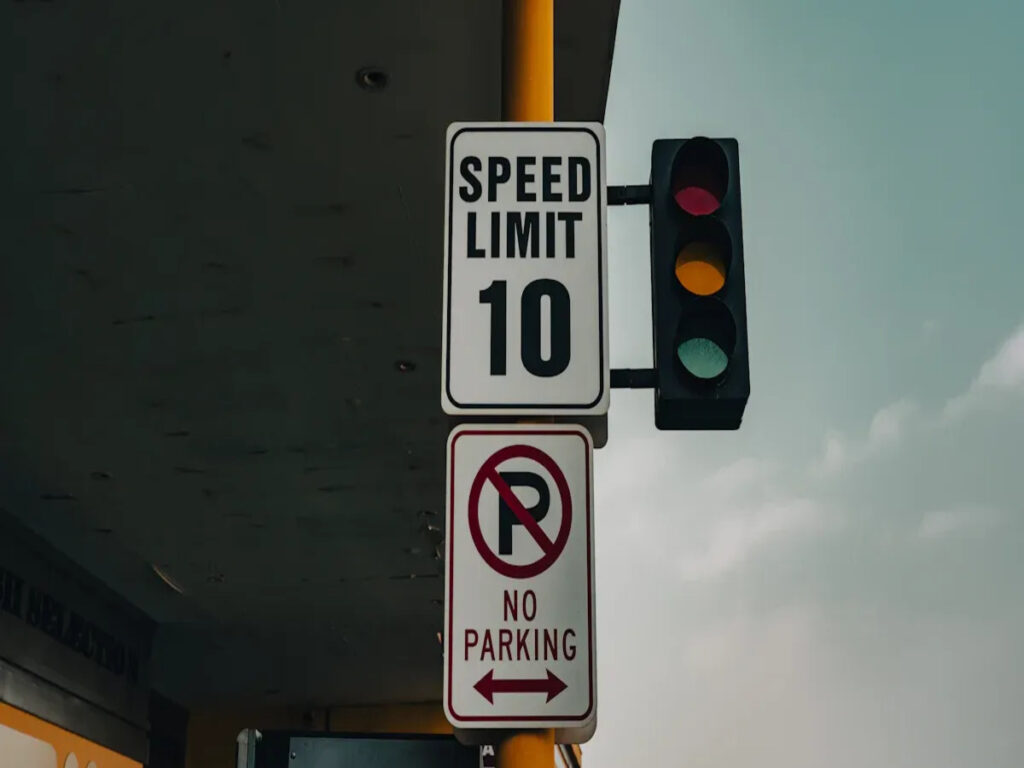
Impact sur la durabilité
When you choose aluminum road signs, Tu veux qu'ils durent. The thickness of each sign plays a big role in how well it stands up to daily challenges. Thicker signs give you more strength. Ils résistent à la flexion, gauchissement, and breaking, even when strong winds or heavy rain hit. If you live in a place with snow or extreme temperatures, thicker aluminum helps your signs stay in good shape for years.
Conseil: Thicker aluminum panels also help signs bounce back from impacts. If a car or large object hits the sign, it is less likely to break or bend. This means your sign keeps doing its job, keeping roads safe and clear.
Durability also means your signs can handle pollution and harsh weather. Thicker aluminum resists rust and damage from the environment. This keeps your signs looking bright and easy to read, ce qui est important pour la sécurité.
Coût et installation
You might think thicker signs are always better, but you also need to think about cost and installation. Thicker aluminum road signs use more material, so they cost more to make. Si vous avez un gros projet, these costs can add up quickly.
- Thinner signs (0.5-1 mm) work well for small or indoor uses. They are light and easy to handle.
- Medium thickness (1-2 mm) gives you a good balance for most outdoor signs.
- Thicker plates (2-3 mm) are best for large signs or places where you need extra durability.
Heavier signs can be harder to move and install. You may need more people or special tools to put them up. Lighter signs are easier to handle, but they may not last as long in tough conditions. Always think about where you will use the sign and how much you want to spend before you choose the thickness.
Aluminum Road Signs: Material and Standards
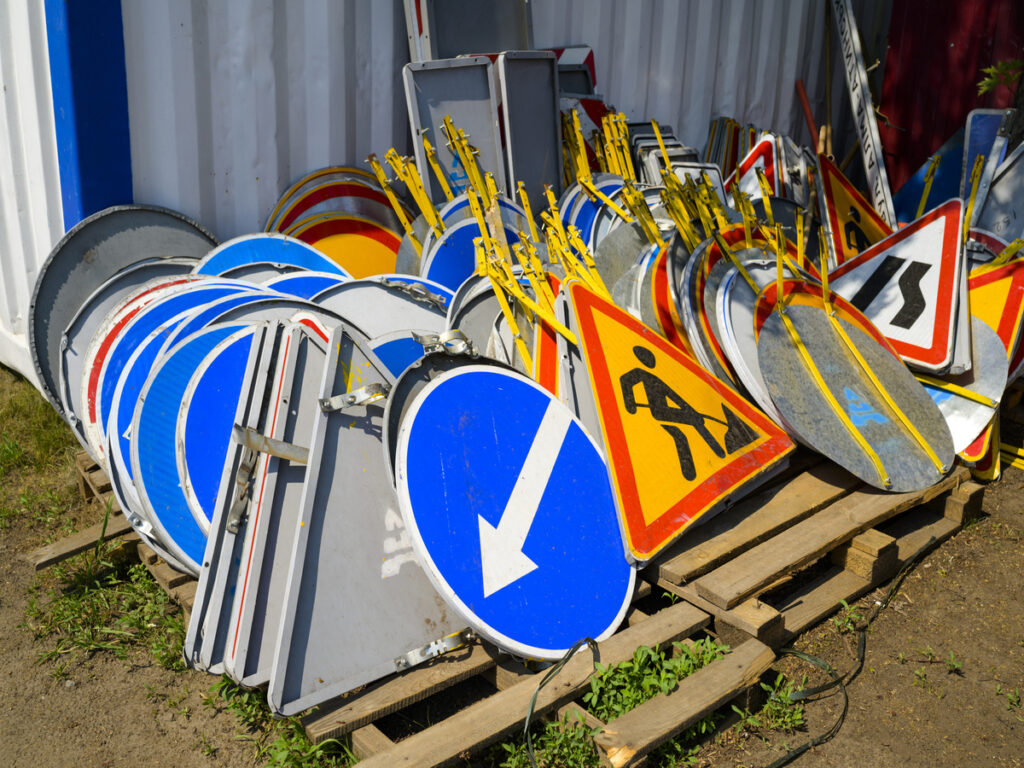
Common Alloys Used
Quand tu vois aluminum road signs, you might ask why they last so long. The answer is the type of aluminum alloy used. Most companies pick 5052 alliage d'aluminium because it does not rust easily. It also stays strong even after being bent many times. This alloy bends without snapping, so signs can handle bad weather and bumps. Certains panneaux utilisent 6061 ou 6063 alloys too. These alloys are strong and have a smooth finish. They work well for frames and other parts.
If you need reflective aluminum signs for highways or busy roads, 5052 is a great pick. It does not get damaged by rain, neige, or salty air near the ocean. Aluminum has a natural layer that stops rust. This keeps your signs bright and easy to see.
Here is a simple table that compares two popular alloys:
| Propriété | Alliage 6061 | Alliage 6063 |
|---|---|---|
| Force | Stronger than 6063 | Not as strong as 6061 |
| Résistance à la corrosion | Not as good as 6063 | Better at stopping rust |
| Heat Treatability | Can be heat-treated | Can be heat-treated |
| Finition de surface | Normal finish | Smoother finish, good for buildings |
| Utilisations typiques | Used for building and machines | Used for building looks and sign frames |
Aluminum road signs made with these alloys are tough and easy to put up. Reflective aluminum signs last longer and need less care than steel signs.
Standard Thickness Options
You must pick the right thickness for your reflective aluminum signs. This helps them work well where you live. Aux États-Unis, most road signs use .080″, .100″, or .125″ épaisseur. Small signs like stop signs often use .080″ aluminium. Big signs may need .100″ or .125″ to stay stiff and not bend.
En Europe, you will see thicknesses like 1mm, 1.5mm, 2mm, and 3mm. These sizes fit different types of signs. Thick signs are best for highways or windy places. Thin signs are good for quiet streets or short-term use.
- NOUS. sellers say .040″ is good for small reflective aluminum signs. .063″ is for medium jobs. .080″ is for big or heavy-duty signs.
- En Europe, signs use 1mm to 3mm thickness, based on where and how big the sign is.
Conseil: Always check your local rules before picking the thickness for your aluminum road signs. This makes sure your signs are safe and last a long time.
Pros and Cons of Different Thicknesses
Durabilité et durée de vie
When you pick how thick your aluminum road sign is, you decide how long it will last. Thicker signs are stronger against wind, pluie, and people trying to damage them. They last longer before you need to get new ones. Thinner signs are okay for calm places, but they can bend or dent if something hits them or if the wind is strong.
Here is a table that shows how thickness changes how long aluminum signs last:
| Épaisseur d'aluminium | Utilisation typique | Durée de vie moyenne (Uncoated) | Durée de vie moyenne (Recouvert) | Notes on Durability and Environmental Impact |
|---|---|---|---|---|
| 0.040″ | Signes légers | 7–10 ans | >15 années (avec revêtement) | Thinner gauge is not as good against wind or damage; does not last as long in tough weather |
| 0.080″ | Signes lourds | 7–10 ans | >15 années (avec revêtement) | Thicker gauge is better against wind and damage, Donc ça dure plus longtemps |
You can see that thicker signs, especially with a special coating, last longer and need less fixing. If you want signs for highways or busy streets, thicker aluminum is the best pick. For outdoor signs in bad weather or busy places, thick signs keep their shape and color for a long time.
Note: Cleaning your signs and checking them often helps them last longer, no matter how thick they are.
Implications de coûts
You might ask if thicker signs are worth the extra money. Thicker aluminum costs more because it uses more metal. Vous payez plus au début, Mais vous économisez de l'argent plus tard. Thicker signs last longer and do not need to be replaced as much. This means you spend less on new signs and putting them up again.
Let’s look at how thickness changes cost and how much you get back for your money:
| Épaisseur d'aluminium | Durée de vie (Années) | Durability/Strength | Utilisations typiques |
|---|---|---|---|
| 0.040″ (mince) | 5-7 | Light-duty, bends in high winds | Low-traffic lots, indoor garages |
| 0.063″ (mid-weight) | 7-10 | Stiffer, MUTCD minimum for public roads | Retail centers, campus |
| 0.080″ (épais) | 10-12 | Robuste, resists plow spray and heavy wind | Fire lanes, truck yards |
If you use a thicker traffic sign, toi get more for your money over time. You do not have to worry about dents or damage as much. Plus de dix ans, the cost each month is low, so thicker signs are smart for places that need strong, signes durables.
Weight and Handling
The thickness of your sign also changes how easy it is to move and put up. Thicker signs weigh more. You might need more people or special tools to install them, especially if the sign is big. Thinner signs are lighter and easier to carry, so they are good for signs you only need for a short time or in quiet places.
Here are some safety tips for putting up and taking care of aluminum road signs:
- Use holes that are already drilled or frames to make mounting quick and safe.
- Always put signs at least 2.5 meters above the ground so people can see them.
- Check the bolts and other parts often to keep signs safe.
- Clean signs with soft things and do not use strong chemicals to keep the surface nice.
- Thicker signs, comme .080″, are strong but still easy enough to handle for most street and parking signs.
Conseil: L'aluminium est plus léger que l'acier, so even thick signs are not too heavy. This makes aluminum a great choice for outdoor signs that need to be strong and easy to put up.
Exemples du monde réel
- Highways and busy roads use thick signs to stand up to strong wind and cars hitting them.
- Neighborhood streets or parking lots use thinner signs because they do not face as much trouble and cost less to put up.
When you look at the good and bad sides, you see that thick signs last longer and are stronger, Mais ils coûtent plus cher et sont plus lourds. Thin signs save money and are easy to put up, but they might not last as long in hard places. Always pick the right thickness for the job to get the best results.
Choosing the Right Thickness
Facteurs environnementaux
When you choose the thickness of your aluminum road sign, you need to think about the environment where you will place it. Weather plays a big role. If your area gets a lot of rain, neige, ou un soleil fort, thicker aluminum helps your sign last longer. For most outdoor signage, a 0.063-inch gauge works well in normal weather. If you live where storms, high winds, or extreme temperatures are common, you should pick a 0.125-inch gauge. This thicker option gives your sign more strength and helps it resist bending or breaking.
Wind is another important factor. Large signs or signs in open areas face strong wind loads. Aluminium plus épais, comme 0.125 pouces, keeps these signs from bending or twisting. This thickness is common for signs on highways or bridges, where wind can be very strong. If you use a thin sign in a windy place, it might not last long. In places with blowing sand, sel, ou produits chimiques, thicker signs also last longer because they resist damage better.
If you’re interested in learning more about how to choose the right aluminum thickness for your traffic signs based on wind load and size, Consultez notre blog: Comment choisir l'épaisseur d'aluminium pour les panneaux de contrôle de la circulation en fonction de la charge et de la taille du vent.
Traffic and Impact Risk
Traffic volume and the risk of impact also affect your choice. Routes très fréquentées, autoroutes, and construction zones need thicker signs. These areas have more cars, camions, and even heavy equipment. Signs here must stand up to bumps, tubes, and even vandalism. A thicker sign, comme 0.080 pouces ou plus, gives you better protection.
In quiet neighborhoods or on small streets, you can use thinner signs. These places do not have as much traffic or risk of damage. Thin signs are easier to install and cost less. Pour les signes temporaires, like those used during road work, a thinner option works well because you will not need the sign for a long time.
Here is a quick guide to help you match sign thickness to traffic and risk:
- Highways and busy intersections: Use 0.080″ or 0.125″ thick signs.
- Zones de construction: Choose thicker, extruded signs for extra strength.
- Residential streets or parkings: 0.040″ or 0.063″ thick signs are usually enough.
- Temporary or event signs: Thin signs work well and save money.
Note: Thin aluminum signs are not a good choice for windy or high-traffic areas. They can bend or break, which means you will need to replace them sooner.
Considérations budgétaires
Your budget is important when picking the right thickness. Thicker aluminum costs more to buy and make. Vous payez plus au début, but you get a sign that lasts longer and needs less fixing. Au fil du temps, this can save you money because you do not have to replace the sign as often.
Here are some facts about costs:
- Aluminum thickness for signs ranges from 0.040 inches for light-duty use to 0.080 inches for commercial strength.
- Thicker signs cost more but resist damage better, which means fewer repairs and replacements.
- The average cost to install a commercial sign is about $464, but prices can range from $181 à $804 depending on size and design.
| Signer des matériaux | Fourchette de coûts typique (USD) |
|---|---|
| Signes en aluminium | $800 - $1,500 (taille & personnalisation) |
| Brass signs | $1,500 - $2,500 |
| Stainless steel signs | $1,300 - $4,500 (épaisseur & éclairage) |
You need to balance your budget with how long you want the sign to last. If you have a small project or need a sign for a short time, a thinner sign saves money. For big projects or signs in tough places, spending more on a thicker sign makes sense.
Conseil: Vérifiez toujours les règles locales avant d'acheter. Some places have laws about the minimum thickness for road signs. Par exemple, Maine says signs must use materials that resist bending and weather. Other places may not have strict rules, but you should still pick a thickness that keeps your sign safe and easy to read.
Best Sign Material for Road Signs
Why Aluminum Stands Out
Aluminum is a great choice for road signs. It lasts a long time and stays bright. Your message will stay clear for years. L'aluminium ne rouille pas, Même sous la pluie ou la neige. C'est léger, afin que vous puissiez le déplacer et l'installer facilement. This saves you time and work.
Aluminum makes a special layer that stops rust. Vous n'avez pas à vous soucier de la rouille, even near the ocean or in wet places. You can recycle aluminum many times without losing quality. Cela aide l'environnement. Aluminum also works well with reflective coatings. Reflective aluminum signs are easy to see at night and during the day.
Here is a table that shows why aluminum is the best sign material for road signs:
| Propriété | Explication |
|---|---|
| Durabilité | Withstands harsh weather for many years |
| Léger | Easy to carry and install |
| Résistance à la corrosion | Ne rouille pas, Même dans des endroits humides ou salés |
| Rentabilité | Saves money over time because it lasts longer |
| Recyclabalité | Can be recycled again and again |
| Attrait esthétique | Looks good and supports reflective coatings for safety |
| Facilité d'installation | Simple to mount and manage |
Comparing Alternatives
Autres matériaux are used for road signs too. Steel is very strong but heavy. It can rust if you do not keep it coated. Plastic signs are light and cheap. But they crack and fade in the sun. Aluminum composite panels have aluminum sheets and a strong core. They do not bend easily and last a long time. But they cost more at first.
Voici une comparaison rapide:
| Matériel | Key Advantages for Road Signs |
|---|---|
| Aluminium | Ne rouille pas, lightweight for easy handling, longue durée, easy to recycle, supports clear graphics application. |
| Acier | Très fort, used in high-risk areas, heavier than aluminum, requires coatings to prevent rust in wet environments. |
| Plastiques | Lightweight and easy to cut, adapté à une utilisation à court terme, but degrade quickly under sun exposure (less than 5 années). |
| Composite en aluminium | Combines aluminum sheets with a core for strength and rigidity, résistant aux intempéries, léger, and durable over 5 années. |
Aluminum gives you the best mix of price, force, et utilisation facile. Reflective aluminum signs are bright and last for years. This makes them the best choice for most outdoor signs.

Conseil: If you want a sign that lasts, stays bright, and helps the environment, choose aluminum as the best sign material for your road signs.
Picking the right aluminum sign thickness means you need to think about how long it will last, how much it costs, and how easy it is to put up. The table below shows the main good and bad points:
| Épaisseur | Utilisation typique | Pros | Inconvénients |
|---|---|---|---|
| 40 milles | Petit, novelty | Léger, facile à monter | Not for outdoor posts |
| 63 milles | Most common signs | Good balance, widely used | Less durable for large signs |
| 80 milles | Grand, robuste | Very durable, fort | Plus lourd, coût plus élevé |
The best thickness for you depends on your project, the weather in your area, and how much money you want to spend. Many government groups say you should use at least 0.081 inches if you want your sign to last a long time. You can use websites and watch videos to help you pick the right thickness.
If you want help, talk to sign experts or use an online tool to find the best thickness for your sign.
FAQ
What thickness should you choose for a highway sign?
You should pick a thickness of at least 0.080 inches for highway signs. This size gives your sign strength against wind and impact. Thicker signs last longer and stay readable in busy areas.
Can you use thin aluminum signs outdoors?
You can use thin aluminum signs outdoors in quiet places. For busy roads or harsh weather, thin signs bend or break easily. Thicker signs work better for outdoor use where durability matters.
Comment l'épaisseur des signes affecte-t-elle l'installation?
Thicker signs weigh more. You may need extra help or tools to install them. Thin signs are lighter and easier to handle. Always check the weight before you start your project.
Do local rules require a minimum sign thickness?
Beaucoup local rules set a minimum thickness for road signs. You should check your city or state guidelines before you buy. This helps you meet safety standards and avoid fines.

